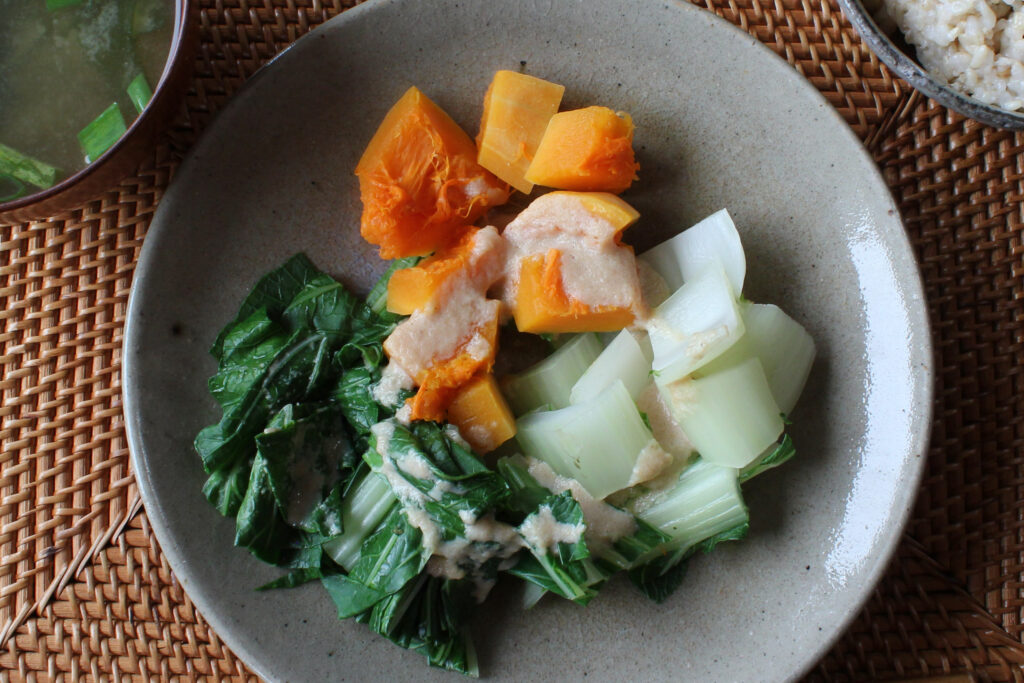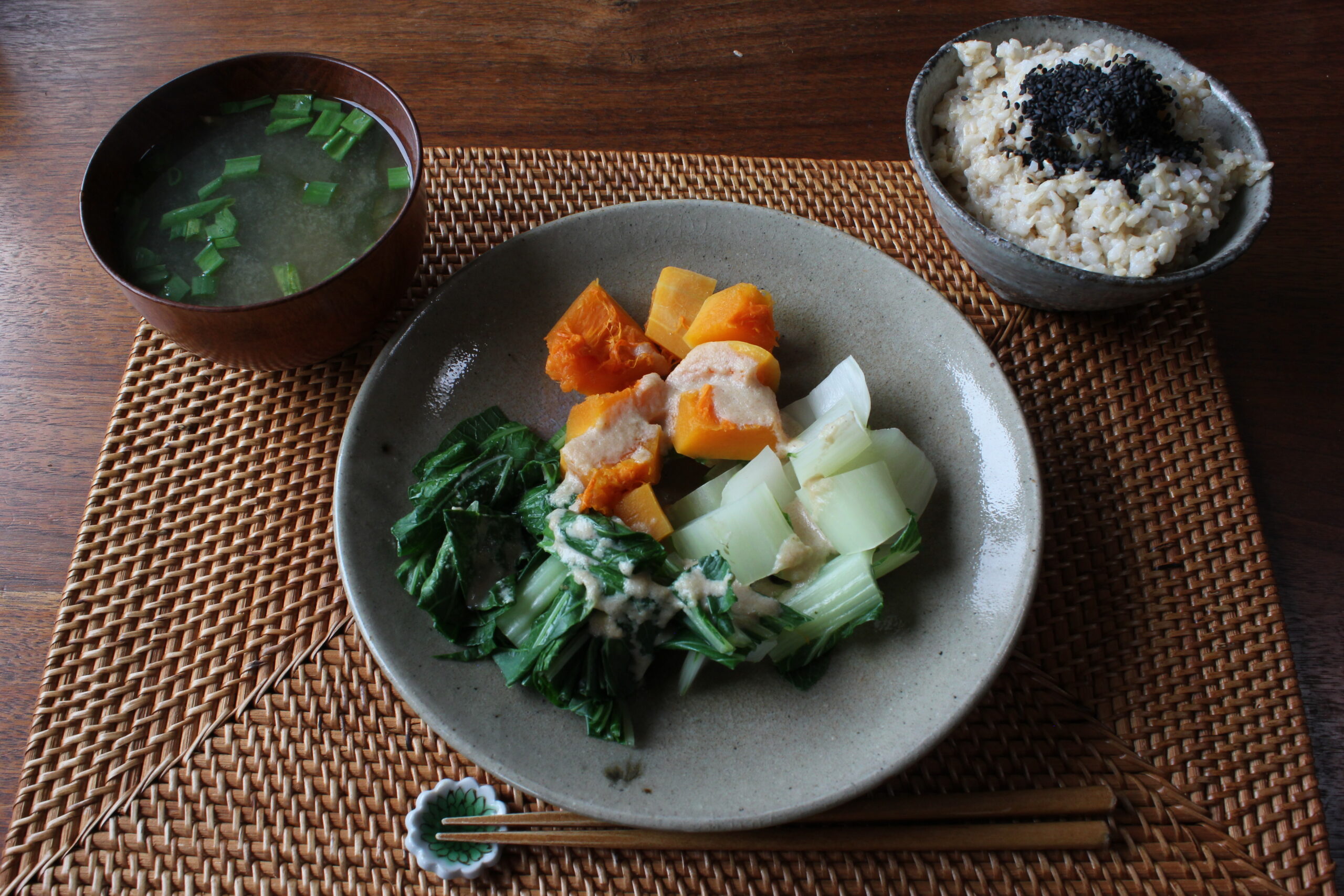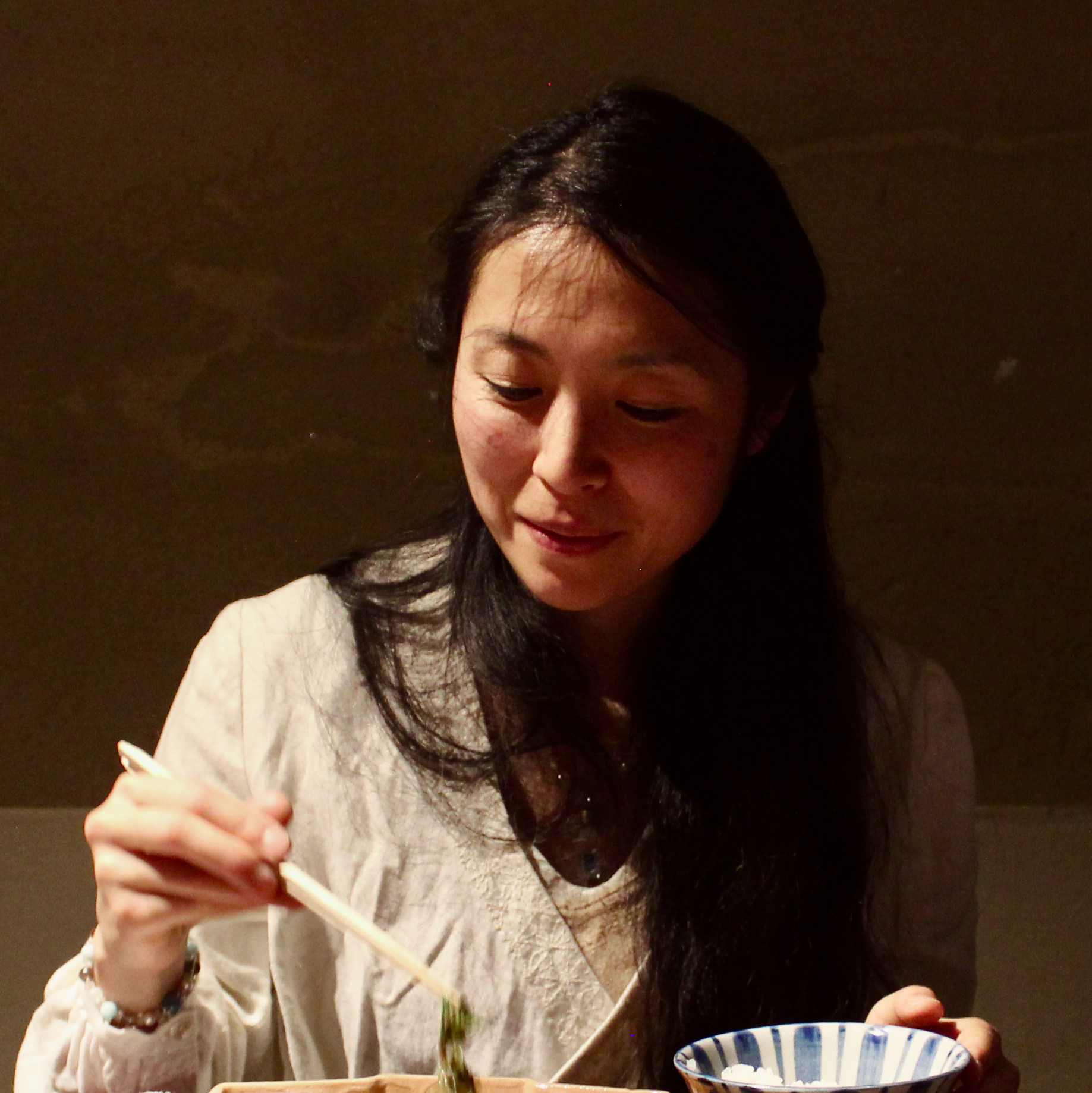As you see, this is a very simple lunch, yet it is actually very delicious, grounding and nourishing. In fact, it is good to reside in the simplicity during moon time, where we shed our layers and reset ourselves with simplicity.
During moon time, I try to be easy on myself. Not spending too much time in the kitchen, yet nurturing my body with warm and nutritional food is the balance I always practice during this period. And this is one of the perfect examples—miso soup, brown rice, and steamed vegetables with delicious dressing on top.
Today’s Menu
- Brown rice with toasted black sesame
- Steamed vegetable with tahini and ume plum vinegar dressing
- Miso soup made with herbal tea broth with spring onion and wakame seaweed
Revitalizing and uplifting energy for lunch
The sun is at its highest and the day is continuing to unfold. Lunch is a meal where we want to give our body good nutrients to energize ourselves and lift us up for the afternoon. It needs different energetic alchemy than dinner, when we want to nourish our body and ground down to the earth so that we can deeply rest and let our body absorb all the nutrients we received from the food.
Steamed vegetables—a gentle and deeply nourishing food
Steaming vegetables is a perfect way to nurture our body with gentleness, as I have also written in the previous article “Moon Time Dinner: Quinoa Salad with Steamed Beets and Kale and Black Sesame Tahini Dressing.” Leafy greens like bok choy have a beautiful lightness as well as lots of vitamins and minerals due to its dark green color. Winter squash with its yellow color is sweet and gently nurturing, and it supports our digestive system. At the same time, cutting it in thin slices brings beautiful lightness and gentleness.
When you cut the vegetables, divide the bok choy into leaf and stem parts so that you can start steaming with the cut winter squash and bok choy’s stem part first. Add the leaf part at the last 1 minute of steaming.

White tahini and ume plum vinegar dressing
Sesame has been my favorite source of calcium for a long time. But not only calcium, it has so many more benefits. In the East, it is considered to energize the qi, strengthen the kidneys and liver, as well as support the intestines for the smooth digestion. Umeboshi (which is fermented ume plum, and the mother of ume plum vinegar) is the detoxing food in Japanese culture. It clears the blood and supports its smooth flow. Also, it strengthens the digestive system. The white sesame and ume plum vinegar are a wonderful combination in flavor and nutrition as a dressing, bringing beautiful, uplifting, mild, rich, and sour-salty flavor.
You can make this dressing with 2 tsp of tahini, 1 tsp ume plum vinegar, and 4 tsp water. Very easy!
My womb health tea for the miso soup broth!
One day, I was making an earthing herbal tea blend for my womb health, combining eight different kinds of herbs with various roots and some leaves. (Number eight signifies balance and good fortune in the East.) It was very delicious, at the same time, it tasted to me more like a broth than a tea. In fact, some of the ingredients were what I have been using for cooking, such as burdock (one of the major root vegetables in Japan), wild yam, as well as nettle, whose fresh version I have been loving to use in my soup broth for years. This made me feel inspired to make miso soup with this tea blend. Sure enough, it was so earthing, nourishing, and delicious! Ever since, this has become my womb nurturing broth, which is perfect to have during my moon time.
Here is the list of the herbs and their benefits:
- Ashwagandha: It relaxes and calms our nervous system, as well as relieving pains and inflammations. At the same time, it also tonifies the qi and blood.
- Astragalus root: It has been used in traditional Chinese medicine, and it tonifies qi and blood. It also supports the kidney’s health and healthy blood flow.
- Burdock: It’s a powerful blood cleanser that is high in anti-oxidants. It also reinforces the kidney.
- Dandelion root: It is a liver cleanser and helps to regulate the circulation of Qi.
- Dong quai: Another herb that has been often used in traditional Chinese medicine. It tonifies the blood and promotes circulation and digestive lubrication.
- Ginger: It promotes circulation and warms the body. It supports also the digestive system.
- Nettle: It is a blood builder and strengthens the kidney. It is also a rich source of many minerals, besides iron.
- Wild yam: It has been used for various symptoms for women. It also tonifies qi and yin (nourishing the body fluids).
I picked each root herb with my two fingers and put 1 tsp of leaf herbs into a pot. You can find the basic miso soup recipe here. For this soup, you substitute the herbal tea for the regular broth. Once I served the soup in the bowl, I added washed, soaked, and cut wakame seaweed and cut spring onion greens. Seaweed (black colored food) is very good for the womb’s health. The spring onion adds aromatic freshness to the soup.

